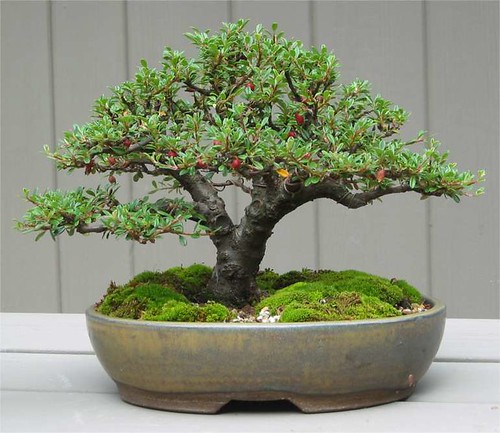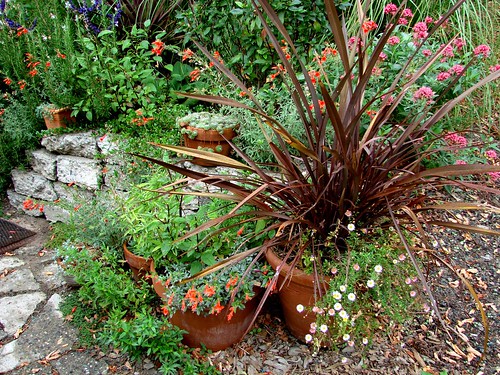Japanese White Pine Bonsai Tree (Pinus parviflora) by Steve Greaves
TheGardenLady received this question about her Bonsai tree from Judy.
I just bought a Bonsai tree which has needles and not leaves and I am not sure what kind it is. How can I tell the type it is? Also I would like to know, when watering do I water at the soil or water from the top to get the needles wet?
There are so many evergreen trees (trees with needles) that are made into Bonsai trees that without a good clear photo of the needles, it is impossible to tell what type of tree you bought. TheGardenLady attempted to bonsai what is known as a red cedar tree but is really in the Juniperis family. It was used because it is supposedly an easy tree to learn how to make a bonsai. Yours might be a juniperis because it is also one of the cheaper evergreen trees. See here.
Without seeing your Bonsai tree, no one can guess what kind of tree it is. Most stores selling trees usually tell you what type of tree it is. Also, the store should have given you instructions on the care, which includes watering of the tree. If this is a reliable store, you should go back to the store if possible to get the type of the tree and at least basic care information, including watering information.
If you were sold a true bonsai, you should treat it like a tree, not a plant because true bonsai are not really indoor houseplants. It should be kept outdoors all year round. TheGardenLady thinks this is a fairly difficult plant to maintain for a beginner. Most die because of improper care, especially improper watering.
Please read this link for information on the care of Bonsai. Evergreen Gardenworks tell you that when you water, the plants must be watered thoroughly when they become slightly dry. You must test the soil to see if it is dry by sticking your finger in the soil. Watering should be done from the top (of the soil), not by submerging the plant, and the bonsai should be watered until they are saturated. You will see water pour from the drain holes when they receive enough water. This method of watering helps to prevent salt buildup in the soil. Since you will be leaving the plant outdoors all year round, it will get some rain as well. In times of drought you may have to water more than once a day. You can bring the Bonsai tree indoors when you have company or to admire its beauty and then return it to the outdoors.
People who are really bonsai enthusiasts take care of them like babies, some even taking their bonsai trees on vacation with them to be sure that they get the proper care





 Â
Â